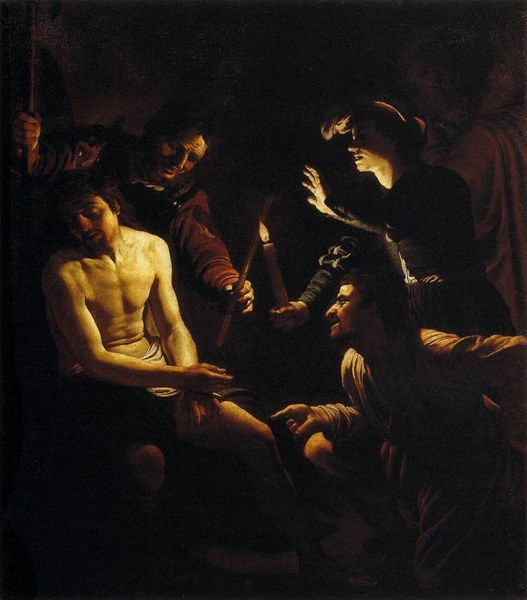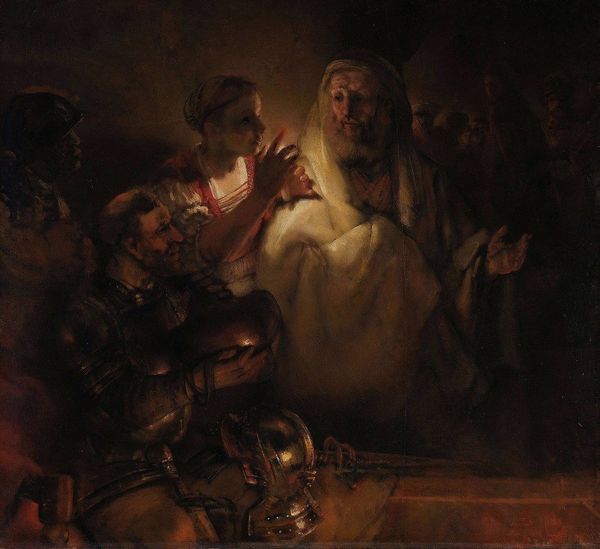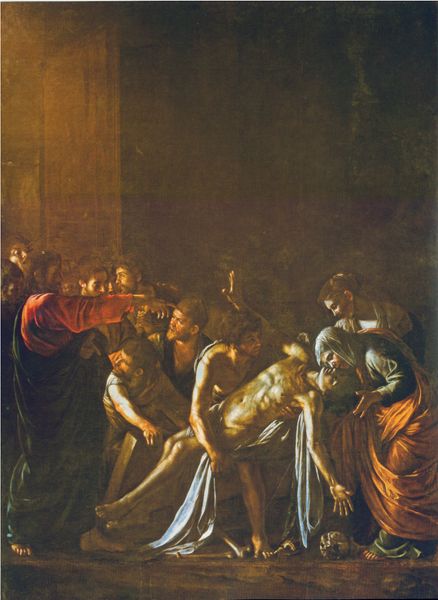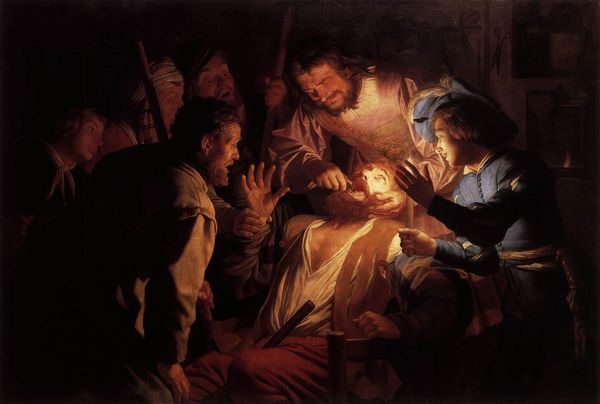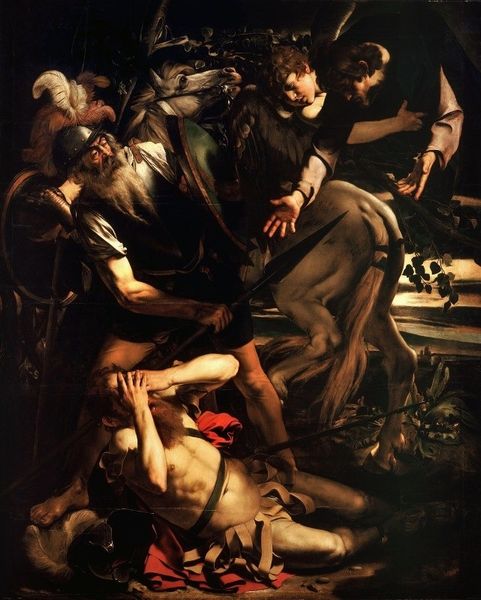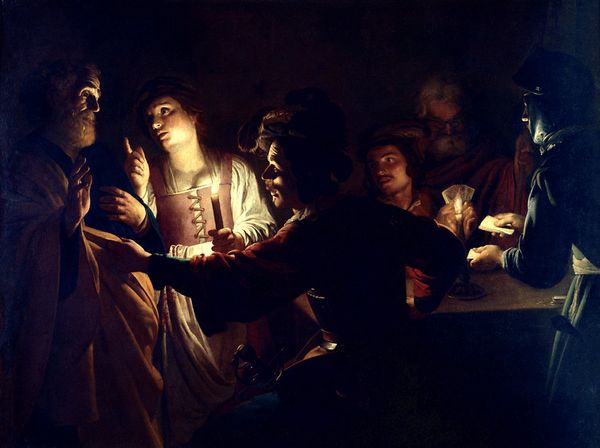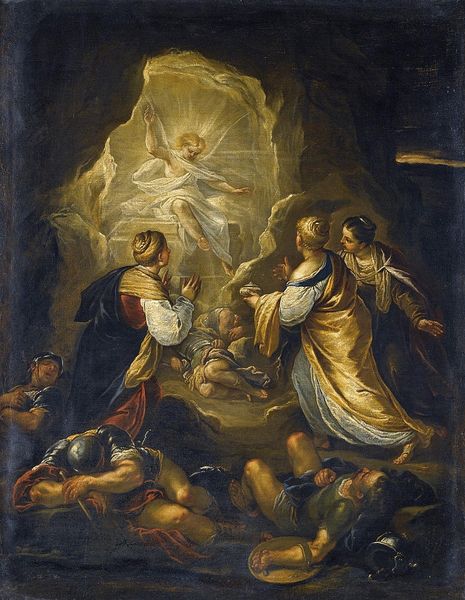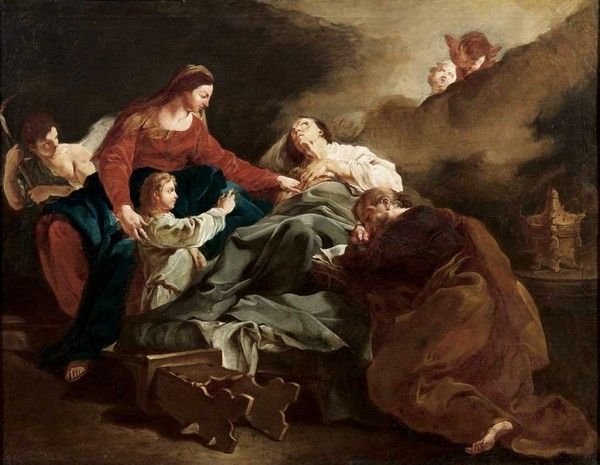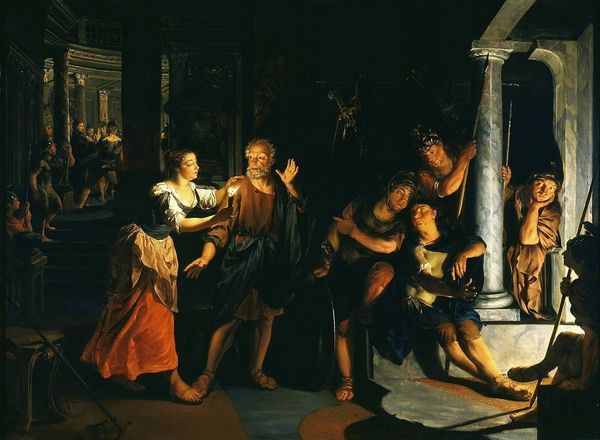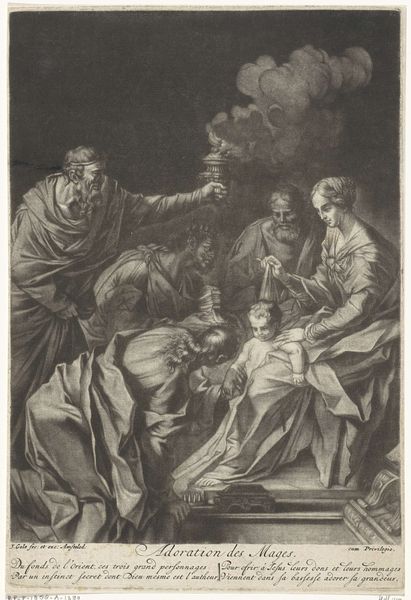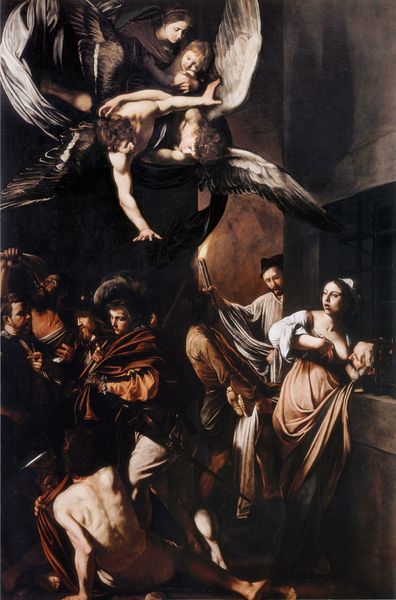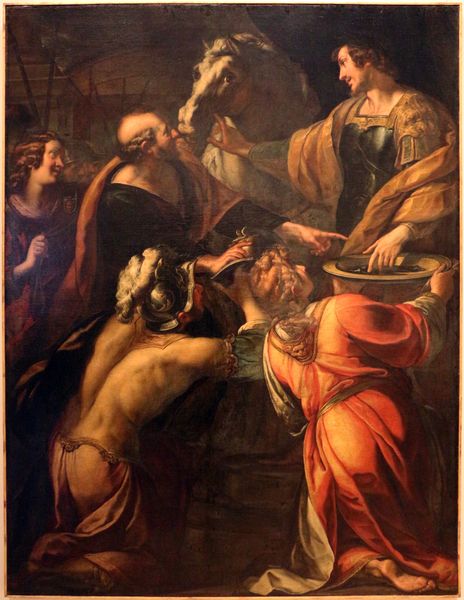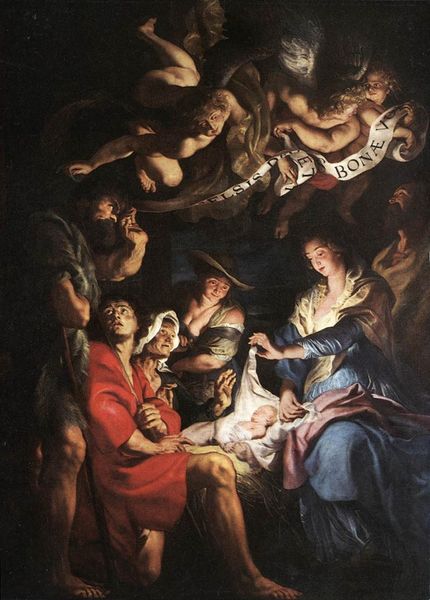
painting, oil-paint
#
narrative-art
#
baroque
#
painting
#
oil-paint
#
figuration
#
chiaroscuro
#
history-painting
Copyright: Public Domain: Artvee
Curator: Looking at Gerard van Honthorst's "Christ Crowned with Thorns" from around 1620, you're immediately struck by its raw emotional power, right? Editor: Absolutely. The stark lighting—that chiaroscuro!—it practically slaps you in the face. It’s like walking into a dimly lit stage, and the actors are frozen mid-scene in this terrible theater of cruelty. Curator: Honthorst’s work here is very typical of the Utrecht Caravaggisti, that northern group of artists drawn to Caravaggio's dramatic style and focus on, shall we say, everyday realities. They were deeply fascinated by representing moments with heightened drama, even if those moments were, essentially, low-life scenes. And of course, they employed cheap labour to produce multiples for a wider clientele. Editor: Cheap labor churning out suffering, eh? It kind of circles back to the brutal theme. The contrast between Christ's passive suffering and the guards' active mockery is chilling. The light makes Christ’s torso and downcast gaze glow, it’s a beacon in all this gloom. What about the historical painting tag assigned? It is biblical after all... Curator: The "historical painting" tag speaks more to the grand narratives and figure painting than simple narrative scenes. Though depictions of Christ are common, artists used to employ recognisable contemporary outfits from the artist's lifetime. This way, one might see what sort of class was tormenting the divine character. The quality of paint here may suggest an artist wanting a wealthy, educated class of individual enjoying history as a spectacle of injustice and moral bankruptcy. The pricepoint and art would make that person's moral standpoint apparent to any viewer, as it is consumed as art in private or semi-public rooms. Editor: It really does bring to the fore the power dynamics at play, not only then, but now as we look back upon it, interpret it through our lenses. Like some dark mirror reflecting human nature back at us. Are we still consuming suffering, maybe through screens nowadays? Curator: Perhaps we are, but with considerably more manufactured layers. Van Honthorst, though employing some level of theatrical trickery, does provide something raw and challenging to behold and dissect, even if his workshop sought simple reproduction. Editor: Definitely a disquieting but thought-provoking experience—both beautiful and deeply unsettling, leaving us to ponder just what hasn’t changed after all this time.
Comments
No comments
Be the first to comment and join the conversation on the ultimate creative platform.
